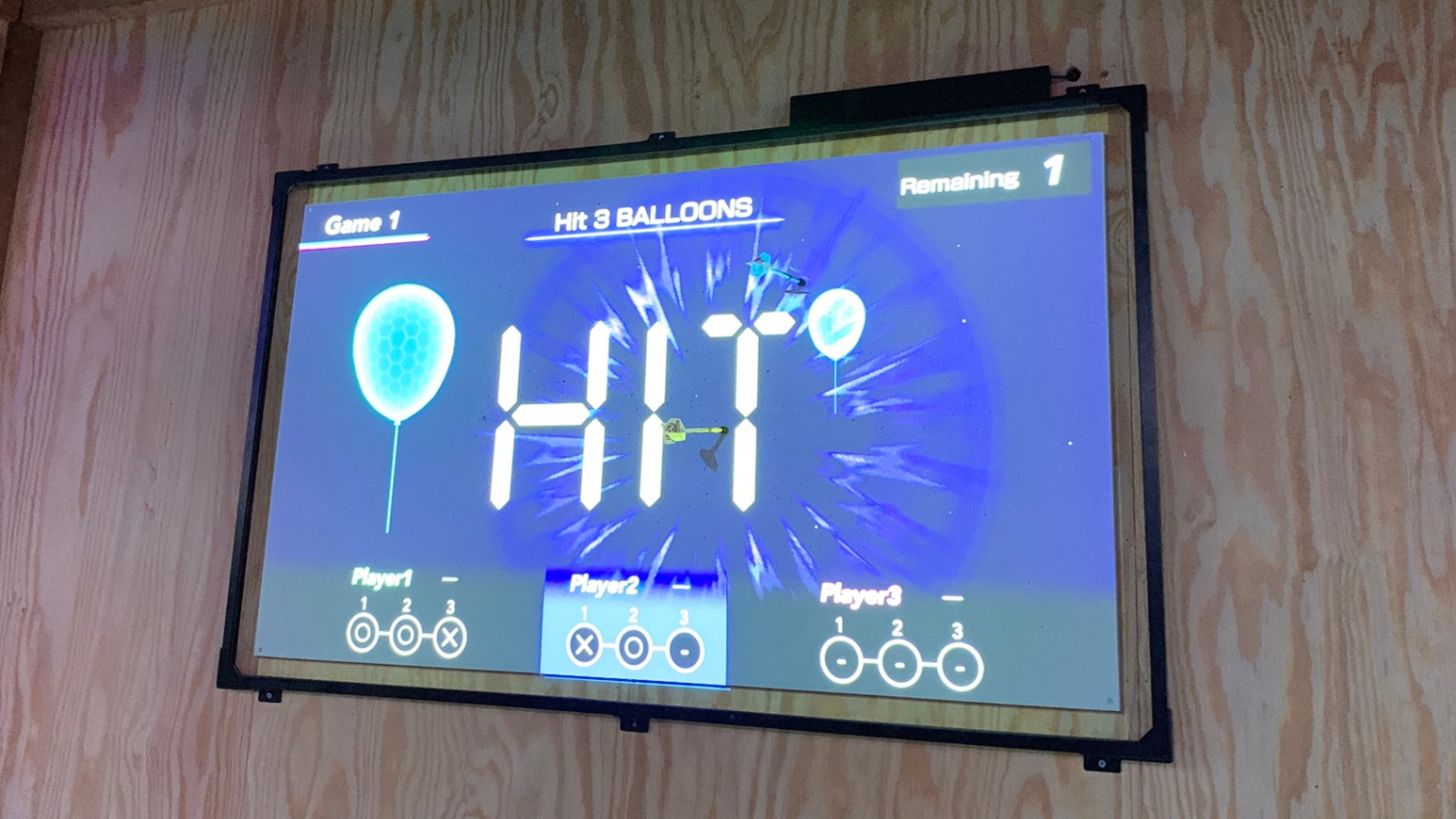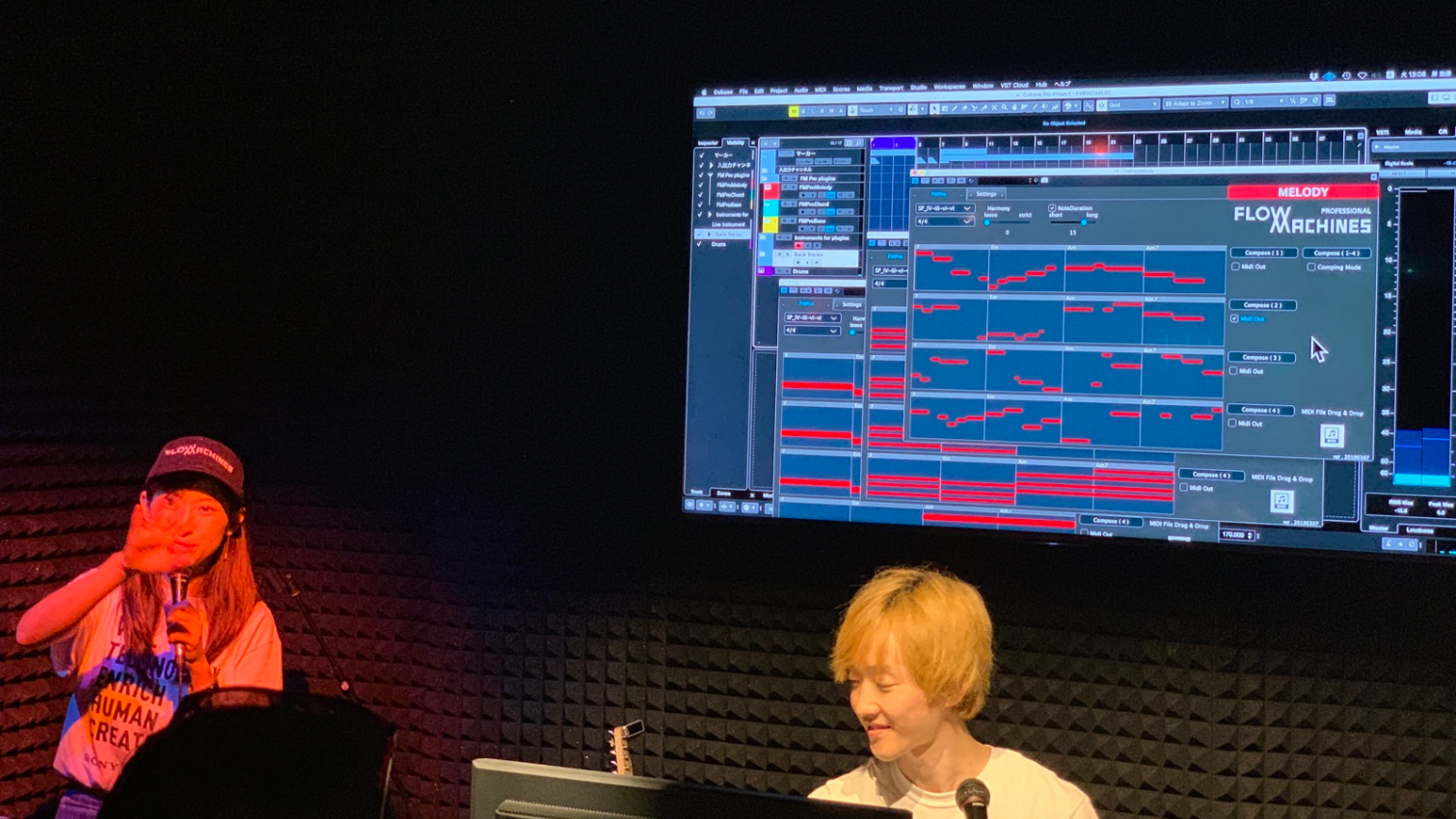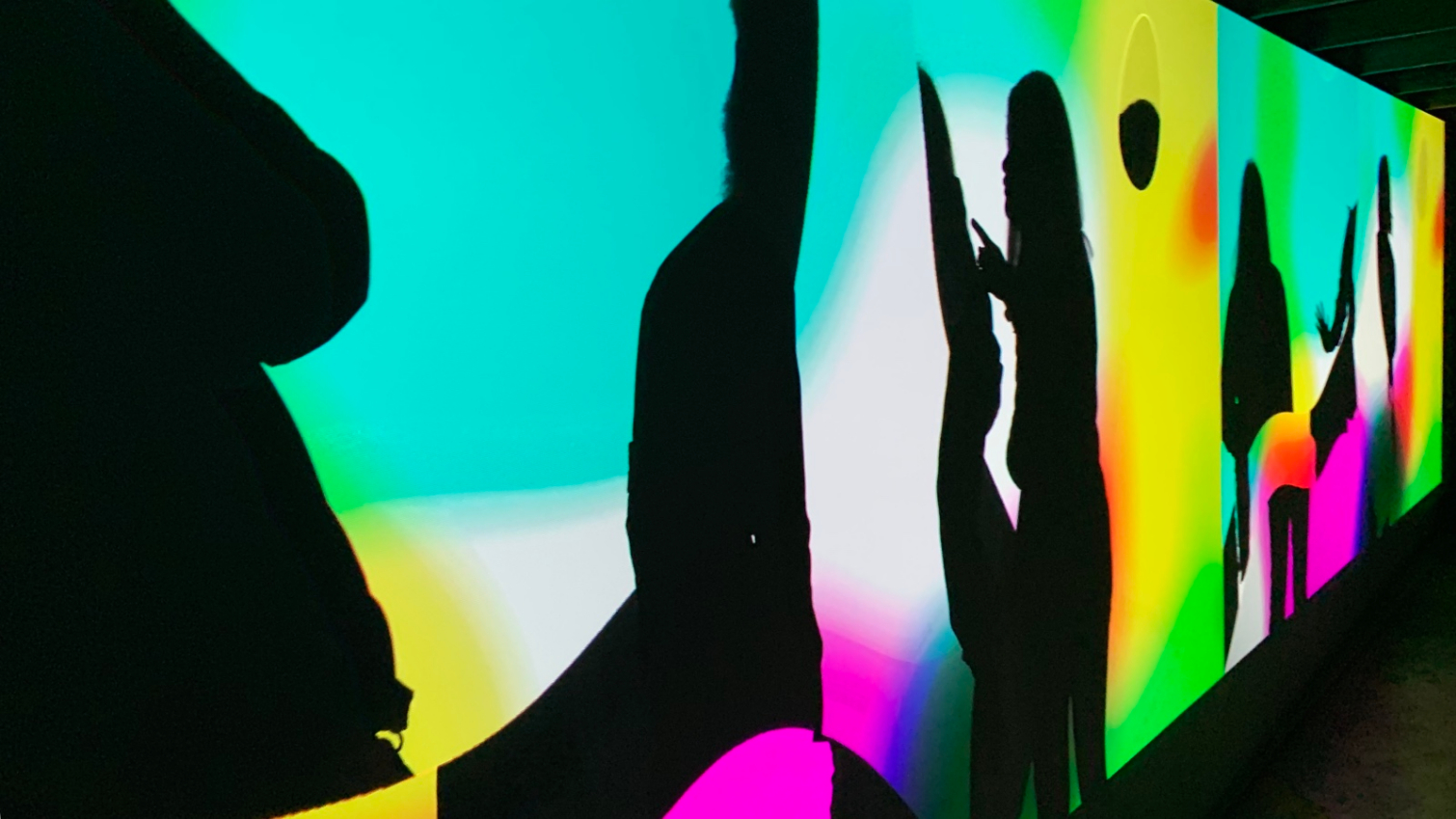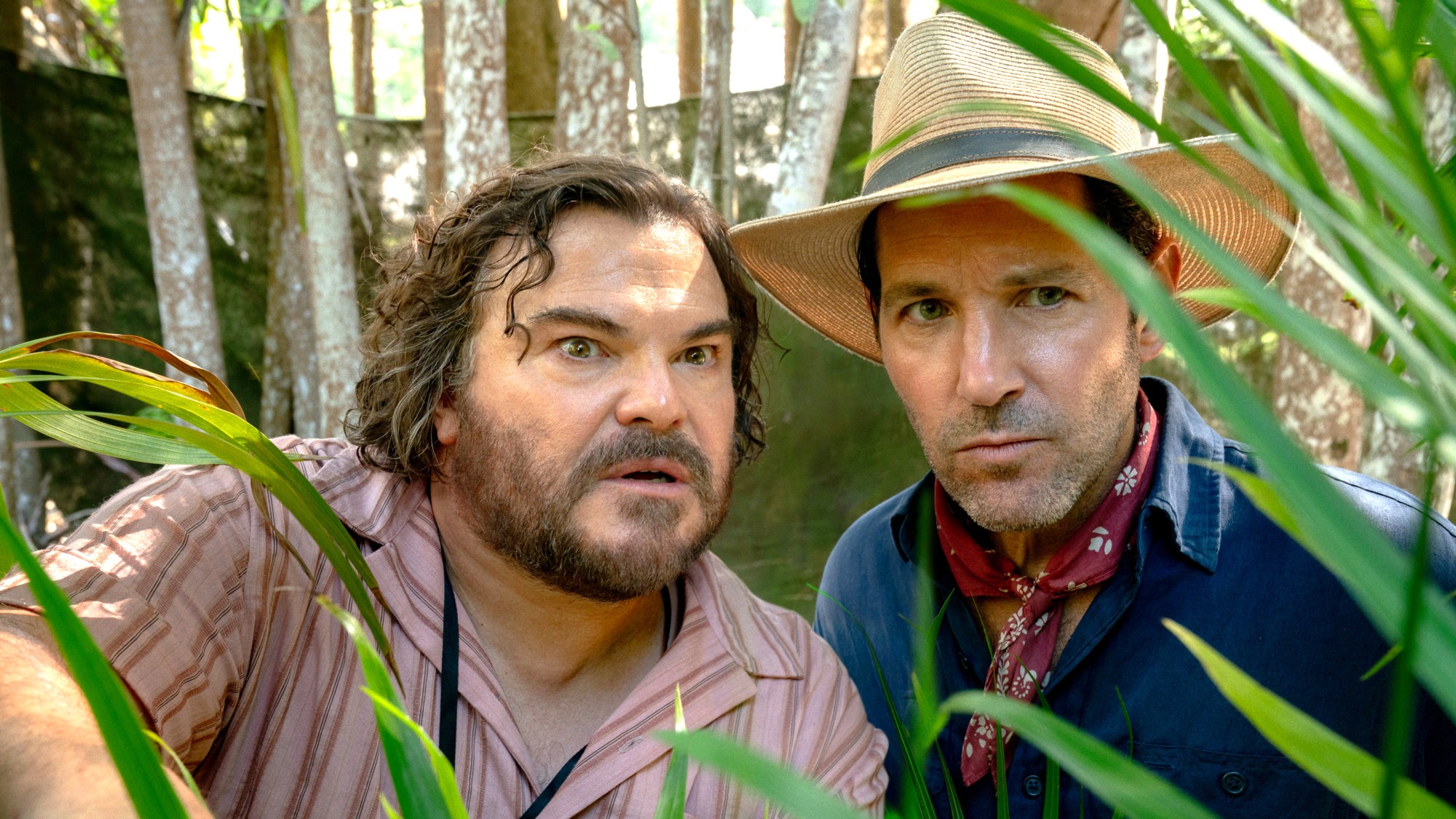I Just Played Sony’s High-Tech Version of Darts, And I Cant Go Back
Flash Darts takes the game to the next level, with moving projections and haptic feedback.
AUSTIN, Texas — As the floor rumbled beneath my feet, I pulled back a dart in my right hand and paused before releasing it at the video screen in front of me. "HIT!" the screen in front of me shouted in all caps text, as I popped a moving virtual balloon, and pumped my hand in the air.

I was playing Flash Darts, a game still in the concept stage, at SXSW's Sony Wow tent, where the electronics giant sets up shop annually to showcase how its technologies could be applied in the future. I was in the second of three rounds of darts, where the difficulty of hitting the moving targets increased sequentially, and the haptic vibration in the floor below me rose as well.
MORE: SXSW 2019: The Best Tech, Movies and Shows So Far
Using projection and object detection, canvas and the original '01 dart game, Flash Darts was a demo that felt ready for a bar near me. Because this technology is still in development, I knew the technician running the experience would have no answers about release date.
So as I aimed another dart this time at a moving flaming cube, and the floor moved even more, I simply said (to no one in particular), "I need this in my life!" I missed the cube, and went on to tie the round with another guest.
The bark is back

In news you can use, though, Sony announced that its latest Aibo robot dog is finally back on sale again (at the hefty price of $2,899), after having sold out by January. In a brief amount of time I had with the metallic pooch, I saw a bit of joy in the light-emitting diodes in the eyes of an Aibo that was stretching and "waking up."
More future tech
Get instant access to breaking news, the hottest reviews, great deals and helpful tips.

In another room, Sony demonstrated how AI could be used to write music, with a tool called Flow Machines. While the app looked like a normal music creation suite such as Pro Tools, a few clicks — selecting the chord progression — allowed Flow Machines to provide four samples for the harmony to be sampled.
This proof of concept seemed interesting, and I could see artists using it as a tool to help break songwriter's block.

In other rooms at Sony's venue, I saw even odder technologies, including a giant wall where myself and eight others had lights and imagery projected on our backs. This became interesting as other images were projected at the shadows in front of us, and it all became interactive, based on our movements. I'm not sure about the practical application for that one.
Lastly, Sony took me and three others into a pitch-dark room, and had us play on toy bongos, which we all plugged open-back headphones into. The experience was a sensory overload at times, filled with echoes and reverberations.

Henry was a managing editor at Tom’s Guide covering streaming media, laptops and all things Apple, reviewing devices and services for the past seven years. Prior to joining Tom's Guide, he reviewed software and hardware for TechRadar Pro, and interviewed artists for Patek Philippe International Magazine. He's also covered the wild world of professional wrestling for Cageside Seats, interviewing athletes and other industry veterans.
